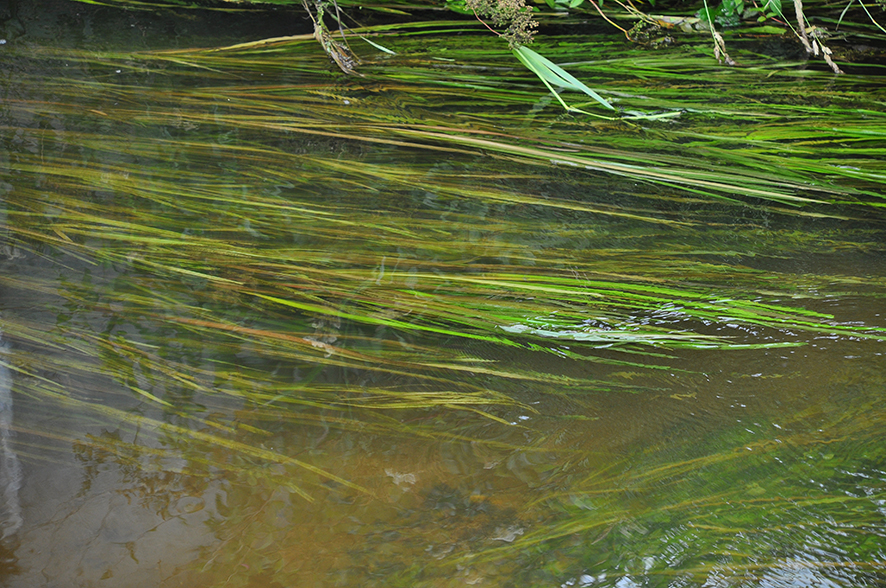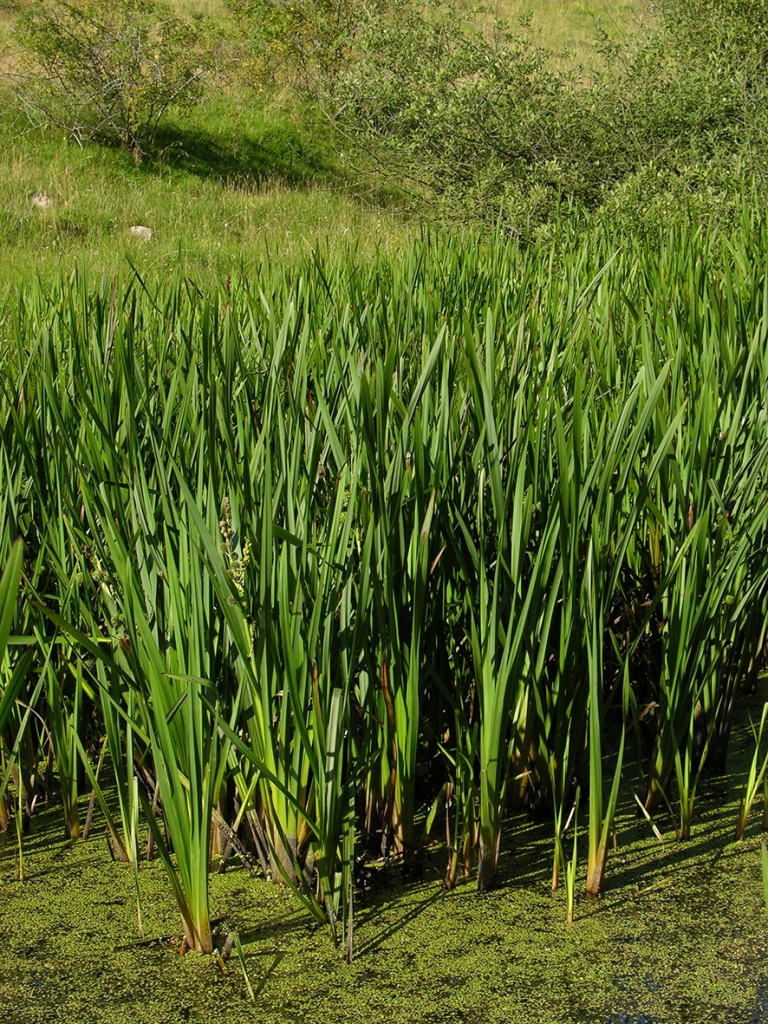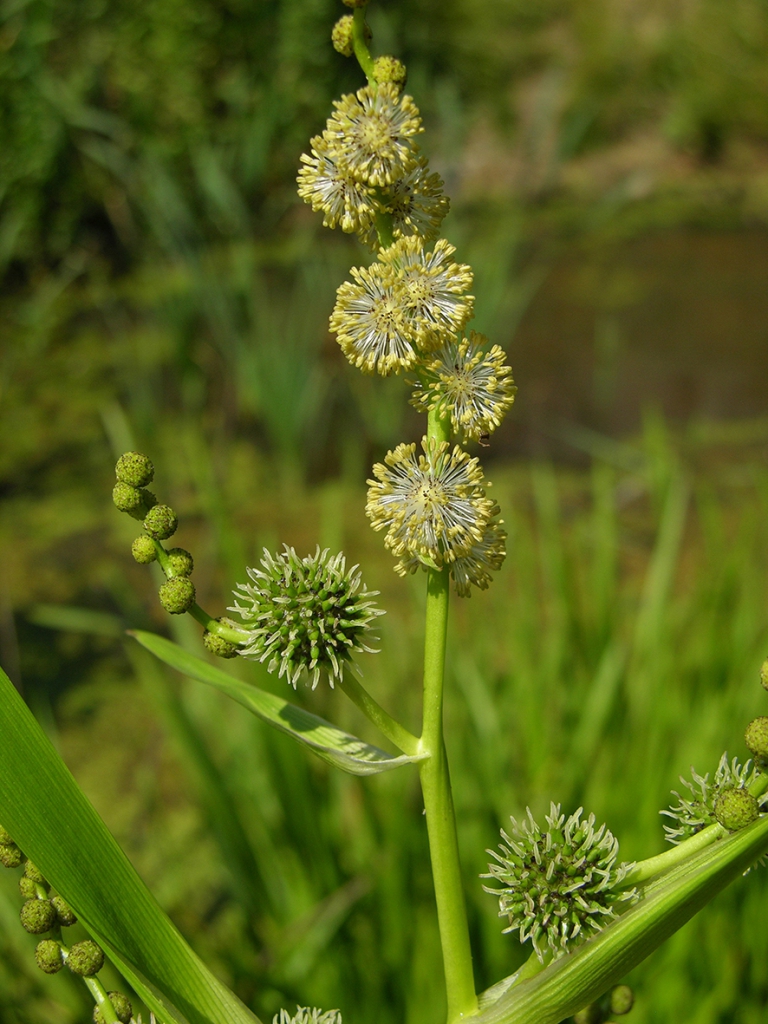Bur-reed
- On land and water
Bur-reeds have two types of leaves. Upright rigid leaves, which together with the flower sprout out of the water along streams, and long soft ribbon-shaped underwater leaves, which float in the stream. Bur-reeds are the most common aquatic plant in Danish watercourses. In many places, the watercourses are maintained by removing the aquatic plants, so the water can quickly pass through the watercourse and away from the farmer's field. Bur-reeds form large carpets of band-shaped underwater leaves that grow quickly after mowing. They spread at the expense of the more slow-growing species.
Bur-reeds are named after its seed pod, which is a small spiked ball that sits on the inflorescence that protrudes from of the water. Two species of bur-reeds are common along the Danish watercourses. The simple stem bur-reed has a branched inflorescence, while the European bur-reed has an unbranched inflorescence. Each of the branched bur-reed’s seeds is shaped like a small spinning top.

Pindsvineknop har sit navn efter frøstanden, der er en lille pigget kugle, der sidder på blomsterstanden, der stikker op af vandet. To arter af pindsvineknop er almindelige langs danske vandløb. Grenet pindsvineknop har en grenet blomsterstand, mens enkelt pindsvineknop har en ugrenet blomsterstand. Det enkelte frø har hos grenet pindsvineknop form som en lille snurretop.

Facts: The branched bur-reed: height 50-150 cm. The leaves are 1-3 cm wide, inflorescence branched with 1-4 prickly green female and several dark male heads. European bur-reed: height 30-50 cm. The floating leaves are 4-8 mm wide and can be up to 2 metres long. The leaves are 0.6 to 1.2 cm wide, and the inflorescence is unbranched with 1-6 female and 4-8 male heads on a long stalk.


